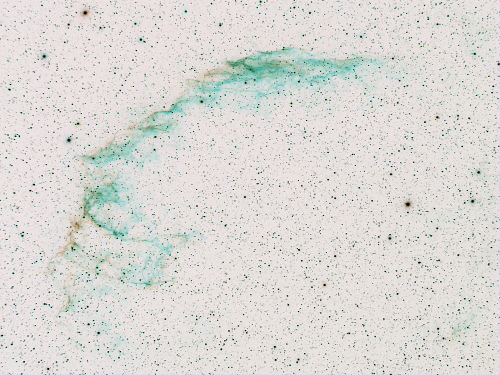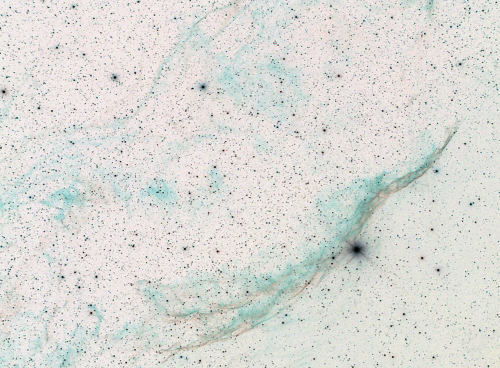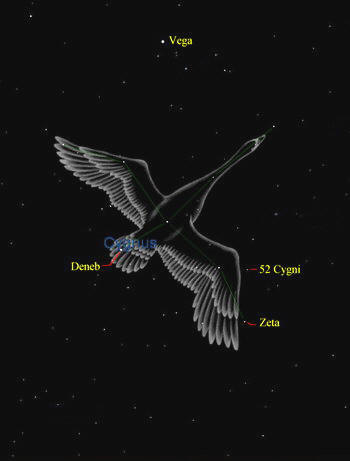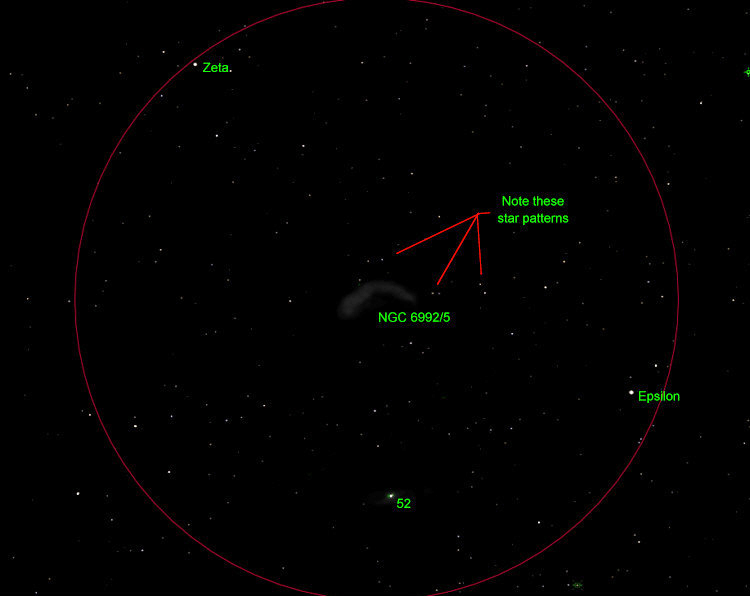Finding The Veil Nebula: If you are a first time user of binoculars, you may have difficulty pointing them at night targets. Practice first in the daytime with objects that don't move. Locate an object (say, the top of a power pole) with your eye, then slowly raise the binoculars to your eyes without taking your eye off of the object. When you can consistently and easily center the object in a binocular field, then take them out at night and try spotting a few very bright stars. Get a feel for just how much of the sky is included in your view.
The easiest starting point to find the Veil Nebula is the star 52 Cygni. This star is the bright star in the top image above. This western part of the Veil Nebula is harder to see than the eastern side of the loop, so try finding the eastern side first. The eastern part of the loop goes under the name of NGC 6992 and NGC 6995. The binocular/finder chart below shows the positions of both sides of the loop. You can click on the chart for a printable black-stars-on-white-background finder chart. Small rich field telescopes like the Orion Star Blast or the Edmund Astroscan work well for spotting the nebulosity. Nebula filters also help. With my Televue 85mm telescope (about 3 and 3/8 inch aperture) I can just make out the nebula without the filter, but it's easier to see with the filter. You can try either an OIII filter or a standard broadband light pollution filter. Again, you won't see color, just a faint glow. Be sure to use averted vision, looking to one side of the nebula's position. If you're under truly dark skies, try spotting the eastern part of the loop with binoculars. As is true with most deep sky objects, it is extremely important to have clear, dark skies.
|
|||||||||||||||||||||||||||



